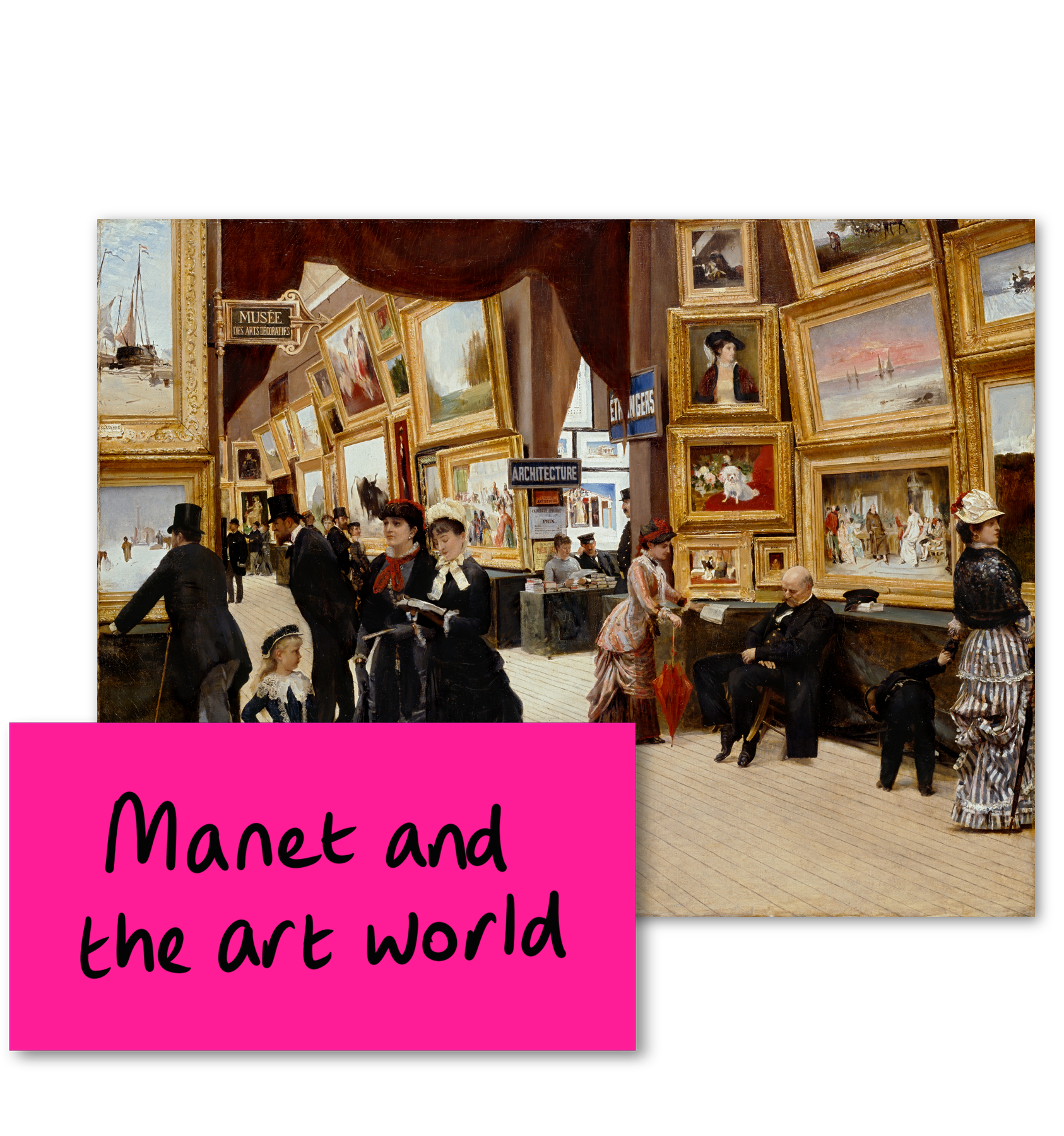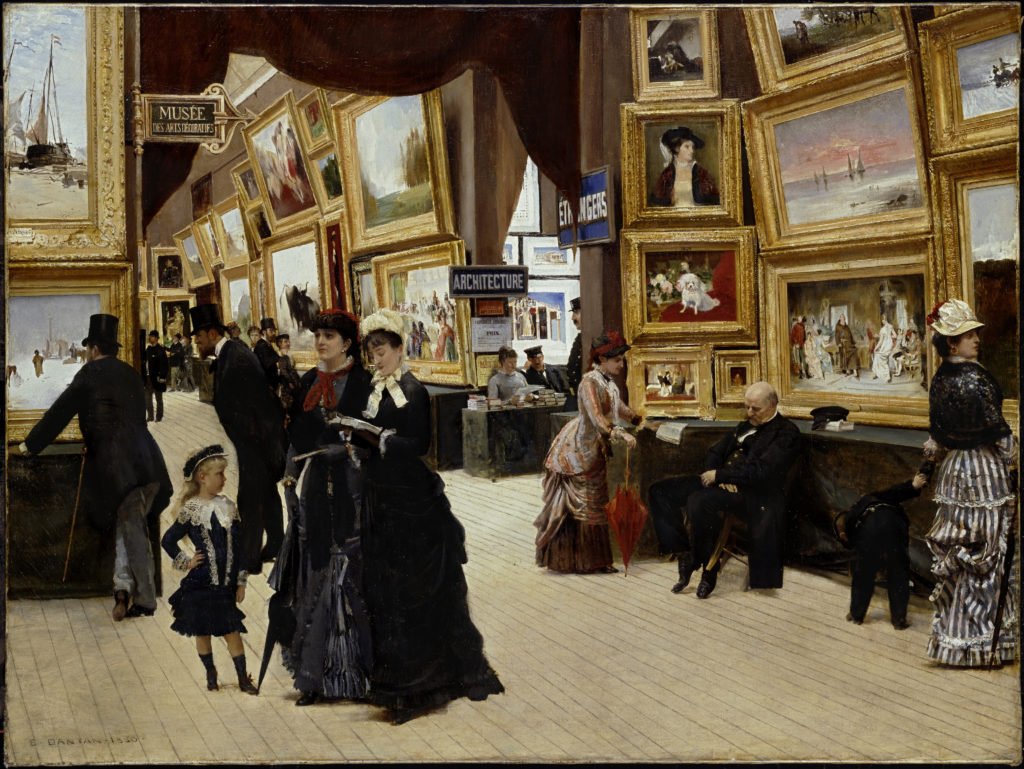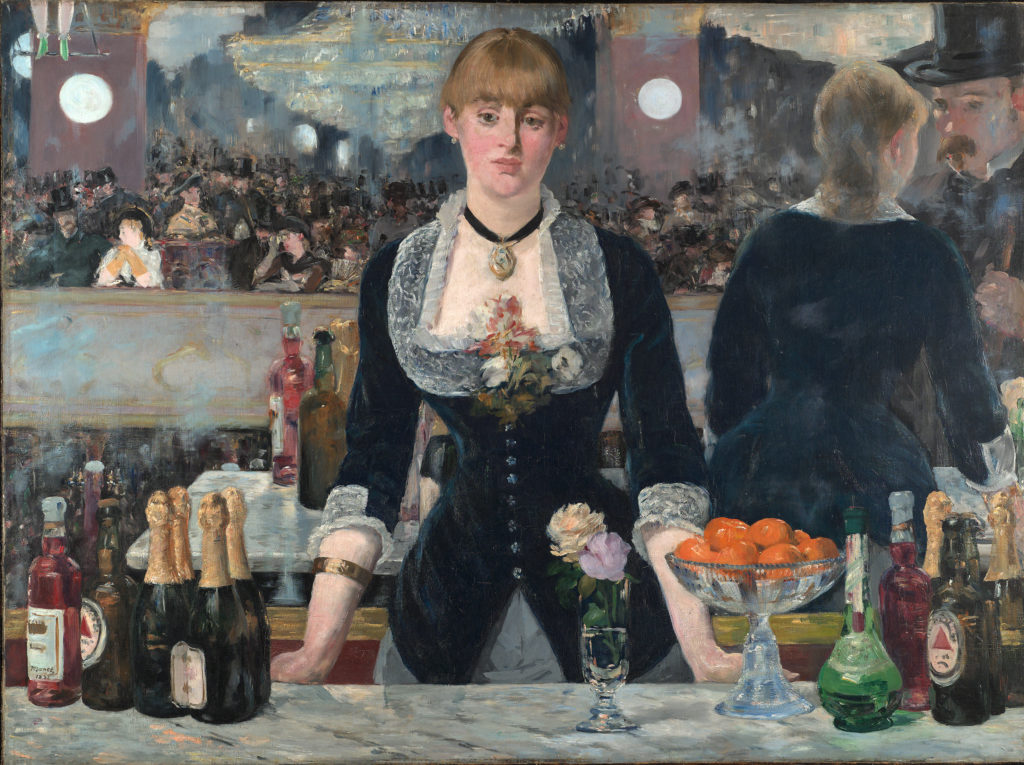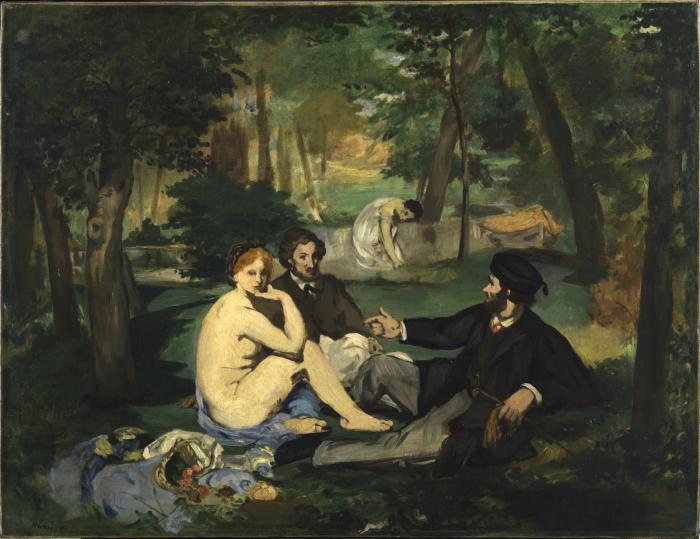
Manet and the art world

Édouard Manet (1832-1883) was not afraid to cause controversy in the Paris art world, and he frequently did. While other rebellious artists of his generation were pioneering independent group shows, Manet continued to submit his works to the Salon, the official state sponsored art exhibition in Paris. The Salon was the main showcase for contemporary art and Manet described it as the “true field of battle”. During his lifetime it was held at a large exhibition venue called the Palais de l’Industrie (now demolished). Harsh daylight lit the spaces, and walls were crammed with paintings so that the frames often touched.
Manet developed a clever approach to ensure his paintings stood out even if they were hung unfavourably, way above eye level. He worked on a large scale so that his figures were close to life size, with areas of crisp focus against hazy backgrounds and painted figures who looked like real people you might encounter in modern Paris. These are all qualities brought together brilliantly in Manet’s A Bar at the Folies-Bergère, which was exhibited in 1882 and was his last major artwork.
Image credit: Edouard Dantan, Un coin du Salon en 1880, 1880. Private Collection, © Sotheby’s / akg-images.

Discuss

Would people at the time be used to seeing a working person on this scale in an artwork?
Can you spot anything unusual about the composition (how the different elements in the painting relate to each other)?
How do you think people would have interpreted the barmaid’s expression?
What is the viewer’s relationship to the barmaid? Does this feel comfortable?
What might audiences at the time have thought about Manet’s brush marks?
Does anything surprise you about the painting? Do you like it?

Discover more

Discover other paintings by Manet that provoked audiences at the time, most famously Déjeuner sur l’herbe (circa 1863-68) and Olympia, 1863.
Image credit: Edouard Manet, Déjeuner sur l’herbe, (1863-1868)

Reflections
“People were like, well, she’s not a celebrity. She’s not a mum. She’s not aristocracy. She’s not famous. She was pretty anonymous.” Hannah
“The position of the bottles in background seems different from the foreground and some things are missing. The painting seems more of a mystery the more I look at it. Maybe it’s like two dimensions, one in her head and one in real life.” Amber
“Responses to Manet’s Bar were very mixed. Reactions to her expression ranged from full of character to bored and paralysed.” Fran
Navigate by clicking the images above, or find a text version below.
Or go back to Themes to explore.
Édouard Manet (1832-1883) was not afraid to cause controversy in the Paris art world, and he frequently did. While other rebellious artists of his generation were pioneering independent group shows, Manet continued to submit his works to the Salon, the official state sponsored art exhibition in Paris. The Salon was the main showcase for contemporary art and Manet described it as the “true field of battle”. During his lifetime it was held at a large exhibition venue called the Palais de l’Industrie (now demolished). Harsh daylight lit the spaces, and walls were crammed with paintings so that the frames often touched.
Manet developed a clever approach to ensure his paintings stood out even if they were hung unfavourably, way above eye level. He worked on a large scale so that his figures were close to life size, with areas of crisp focus against hazy backgrounds and painted figures who looked like real people you might encounter in modern Paris. These are all qualities brought together brilliantly in Manet’s A Bar at the Folies-Bergère, which was exhibited in 1882 and was his last major artwork.
Discuss:
- Would people at the time be used to seeing a working person on this scale in an artwork?
- Can you spot anything unusual about the composition (how the different elements in the painting relate to each other)?
- How do you think people would have interpreted the barmaid’s expression?
- What is the viewer’s relationship to the barmaid? Does this feel comfortable?
- What might audiences at the time have thought about Manet’s brush marks?
- Does anything surprise you about the painting? Do you like it?
Reflections:
“People were like, well, she’s not a celebrity. She’s not a mum. She’s not aristocracy. She’s not famous. She was pretty anonymous.” Hannah
“The position of the bottles in background seems different from the foreground and some things are missing. The painting seems more of a mystery the more I look at it. Maybe it’s like two dimensions, one in her head and one in real life.” Amber
“Responses to Manet’s Bar were very mixed. Reactions to her expression ranged from full of character to bored and paralysed.” Fran
Discover more: Discover other paintings by Manet that provoked audiences at the time, most famously Déjeuner sur l’herbe (circa 1863-68) and Olympia, 1863.

